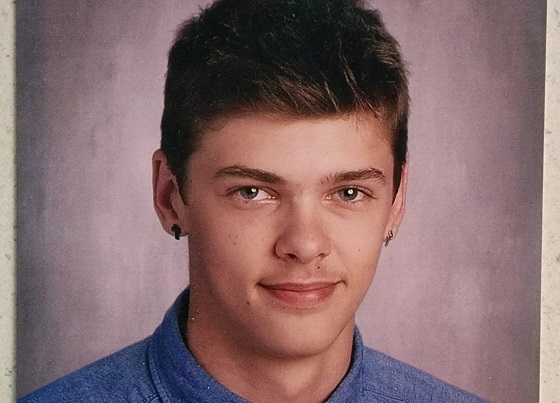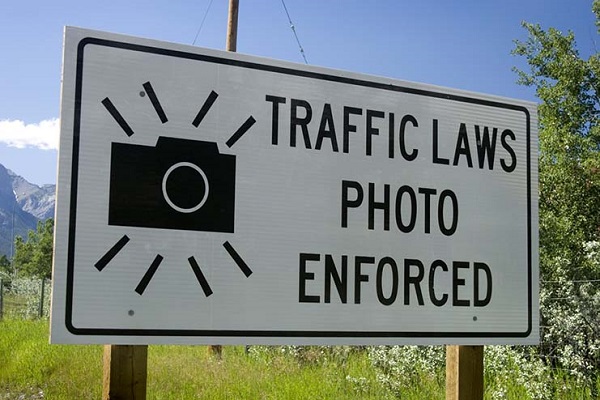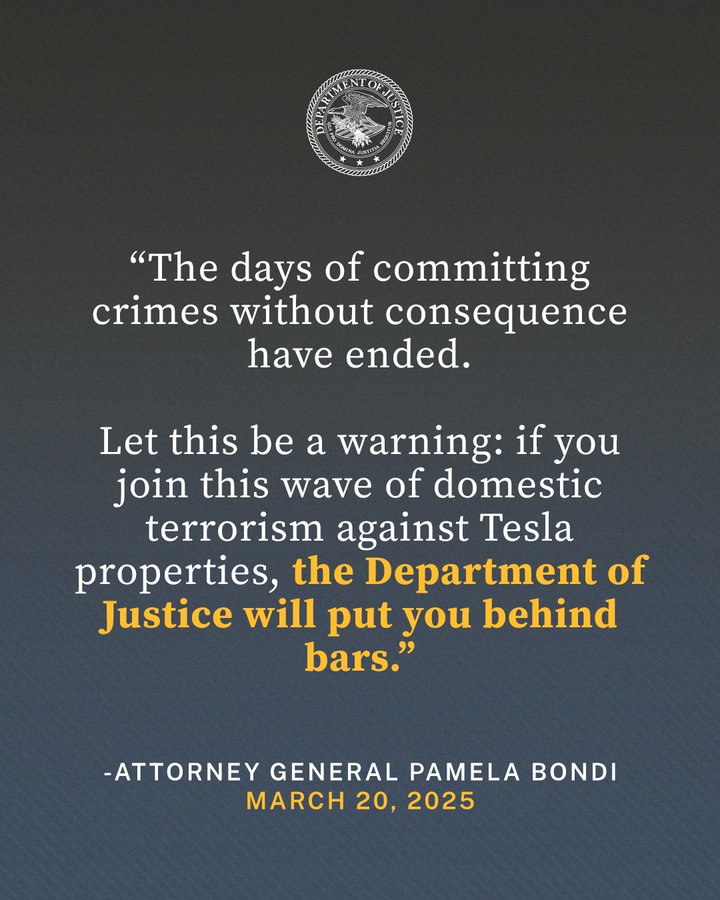Crime
Trudeau’s pro-transgender regime is a get-out-of-jail-free card for Canada’s most violent criminals

From LifeSiteNews
Canada’s most dangerous criminals are being sent to women’s prisons simply by identifying as such. This can only happen because the country is run by people like Justin Trudeau, who believes gender ideology with every fibre of his being.
You’ve probably heard plenty from Justin Trudeau and his progressive clones about conservative premiers “attacking” and “targeting” the so-called “LGBT community” for legislation protecting children from sex change surgeries. But you won’t hear a word about the victims of LGBT ideology – and you won’t hear a thing about the growing list of insanities inflicted on Canada by the policies they have passed and supported.
Consider the case of Adam Laboucan, who as a teenager brutally raped a 3-month-old infant and allegedly drowned a toddler – he was convicted only of the violent pedophilic assault, because he was less than 12 years old when he drowned the 3-year-old boy, and under Canadian law you must be at least 12 to be prosecuted.
Laboucan’s case – which LifeSiteNews reported on last year – was so disturbing that he became Canada’s “youngest designated dangerous offender.”
Now, according to The Canadian Press, Laboucan is “seeking escorted leave from prison to attend Indigenous cultural ceremonies in Vancouver.” You see, Adam Laboucan has changed his name. He is now known as Tara Desousa, and the CP obediently refers to him by his preferred pronouns, leading to ludicrous sentences such as this one:
Desousa, then named Adam Laboucan, was 15 years old in 1997 when she sexually assaulted an infant she was babysitting in Quesnel, B.C. The baby required surgery to repair the injuries.
Laboucan, of course, was not a woman when he attacked the infant and drowned the child. He is not a woman now, despite having obtained sex change surgeries since then (he is 43). He is considered so dangerous that B.C. Supreme Court Judge Victor Curtis imposed an indefinite sentence on him in 1999 because there was, in the view of the court, no foreseeable “time span in which Adam Laboucan may be cured.” The B.C. Court of Appeal affirmed the dangerous offender designation in 2002.
They did so for good reason. Expert psychiatrists stated that Laboucan exhibited everything from “transsexual to pedophilic tendencies.” He was given to self-mutilation and even self-cannibalism. He was promiscuous and volatile, threatening to kill a female guard and behaving so erratically that a 2010 parole review again affirmed his dangerous offender designation due to his problems with “gender identity, impulsive behavior, violence and sexual deviance.” But in 2018, he began to identify as a woman. As LifeSiteNews reported shortly thereafter:
In a 2021 brief to members of the House of Commons, incarcerated women’s rights advocate Heather Mason told a House Committee that numerous women prisoners had been subject to sexual harassment by males who call themselves females who are living in female prisons. Mason made special mention of Laboucan (Desousa) stating: “One of these women reported that while in the mother-child program, two transgender individuals with convictions for pedophilia, Madilyn Harks and Tara Desousa, would loiter near her and her child, making sexist and inappropriate antagonizing comments.” The person who calls himself Madilyn but was named Matthew has been labelled a serial pedophile with an “all-encompassing preoccupation in sexually abusing young girls.”
Note well: the reason one of Canada’s most dangerous criminals, a man with violent pedophilic impulses and a history of profound mental disturbance, can get sent to a women’s prison is because our country is run by people like Trudeau, who believes gender ideology with every fibre of his being.
Now, Laboucan – wearing his new female identity like a skin suit – has applied in Federal Court in Vancouver to attend a “healing centre for women” run by the Circles of Eagles Lodge Society, an Indigenous organization.
Laboucan’s most recent attempt at parole – in June 2024– was denied, with the Parole Board of Canada stating that that the victim of Laboucan’s assault and the family “have suffered pain, anxiety and anguish and long-term emotional impacts resulting from your offending. Each time you come up for parole, they are haunted by your offending and the damage you inflicted on their defenceless son/grandson.”
Of course, the government now expects you to believe that these crimes were committed by a woman – and the board did say that “escorted temporary absences” were “the next logical step in reintegration and gradual release,” despite the fact that he is “an undue risk to society.”
Laboucan’s Vancouver-based lawyer, Caroline North, declined to comment on the Federal Court application when asked by the Canadian Press.
Addictions
Should fentanyl dealers face manslaughter charges for fatal overdoses?

Tyler Ginn prior to his death from a fentanyl overdose in 2021. [Photo credit: Gayle Fowlie]
By Alexandra Keeler
Police are charging more drug dealers with manslaughter in fentanyl overdose deaths. But the shift is not satisfying everyone
Four years ago, Tyler Ginn died of a fentanyl overdose at the age of 18. Tyler’s father found his son unresponsive in the bedroom of their Brooklin, Ont., home.
For Tyler’s mother, Gayle Fowlie, the pain of his loss remains raw.
“He was my kid that rode his bike to the store to buy me a chocolate bar on my birthday, you know?” she told Canadian Affairs in an interview.
Police charged Jacob Norn, the drug dealer who sold Tyler his final, fatal dose, with manslaughter. More than three years after Tyler’s death, Norn was convicted and sentenced to six years in prison.
“I don’t think you can grasp how difficult going through a trial is,” Fowlie said. “On TV, it’s a less than an hour process. But the pain of it, and going over every detail and then going over every detail again … it provides details you wish you didn’t know.”
But Fowlie is glad Norn was convicted. If anything, she would have liked him to serve a longer sentence. Lawyers have told her Norn is likely to serve only two to four years of his sentence in prison.
“My son’s never coming back [and] his whole family has a life sentence of missing him the rest of our lives,” she said. “So do I think four years is fair? No.”
Norn’s case reflects a growing trend of drug dealers being charged with manslaughter when their drug sales lead to fatal overdoses.
But this shift has not satisfied everyone. Some would like to see drug dealers face harsher or different penalties.
“If we say that it was 50 per cent Tyler’s fault for buying it and 50 per cent Jacob’s fault for selling it … then I think he should have a half-a-life sentence,” said Fowlie.
Others say the legal system’s focus on prosecuting low-level drug dealers misses the broader issues at play.
“[Police] decided, in the Jacob Norn case, they were going to go one stage back,” said Peter Thorning, who was Norn’s defence lawyer.
“What about the person who gave Jacob that substance? What about the person who supplied the substance to [that person]? There was no investigation into where it came from and who was ultimately responsible for the death of that young man.”
Manslaughter charge
At least 50,000 Canadians have died from drug overdoses since 2016. Last year, an average of 21 individuals died each day, with fentanyl accounting for nearly 80 per cent of those deaths.
Fentanyl, a synthetic opioid, is up to 50 times stronger than heroin and 100 times stronger than morphine. A dose as small as a few grains of salt can be lethal.
Given its potency, police and prosecutors have increasingly turned to manslaughter charges when a dealer’s product results in a fatal overdose.
A recent study in the Canadian Journal of Law and Society found that the number of manslaughter charges laid for drug-related deaths in Canada surged from three cases in 2016 to 135 in 2021.
Individuals can be convicted of manslaughter for committing unlawful, reckless or negligent acts that result in death but where there was no intention to kill. Sentences can range from probation (in rare cases) to life.
Murder charges, by contrast, require an intent to kill or cause fatal harm. Drug dealers typically face manslaughter charges in overdose cases, as their intent is to distribute drugs, not to kill those who purchase them.
Joanne Bortoluss, a spokesperson for the Durham Regional Police, which charged Norn, said that each of their investigations follows the same fundamental process.
“Investigators consider the strength of the evidence, the dealer’s level of involvement, and applicable laws when determining whether to pursue charges like manslaughter,” she said.
The Canadian Journal of Law and Society study also found that prosecutions often target low-level dealers, many of whom are drug users themselves and have personal connections to the deceased.
Norn’s case fits this pattern. He struggled with substance abuse, including addiction to fentanyl, Xanax and Percocet. Tyler and Norn were friends, the judge said in the court ruling, although Fowlie disputes this claim.
“[Those words] are repulsive to me,” she said.
The Crown argued Norn demonstrated “a high degree of moral blameworthiness” by warning Ginn of the fentanyl’s potency while still selling it to him. In a call to Ginn, he warned him “not to do a lot of the stuff” because he “didn’t want to be responsible for anything that happened.”
Fowlie’s outrage over Norn’s lenient sentencing is compounded by the fact that Norn was found trafficking fentanyl again after her son’s death.
“So we’ve killed somebody, and we’re still … trafficking? We’re not worried who else we kill?” Fowlie said.

Trafficking
Some legal sources noted that manslaughter charges do not necessarily lead to harsh sentences or deterrence.
“If you look at how diverse and … lenient some sentences are for manslaughter, I don’t think it really pushes things in the direction that [victims’ families] want,” said Kevin Westell, a Vancouver-based trial lawyer and former chair of the Canadian Bar Association.
Westell noted that the term “manslaughter” is misleading. “Manslaughter is a brutal-sounding title, but it encapsulates a very broad span of criminal offences,” he said.
In Westell’s view, consistently charging dealers with drug trafficking could be more effective for deterring the practice.
“What really matters is how long the sentence is, and you’re better off saying, ‘We know fentanyl is dangerous, so we’re setting the sentence quite high,’ rather than making it harder to prove with a manslaughter charge,” he said.
Trafficking is a distinct charge from manslaughter that involves the distribution, sale or delivery of illicit drugs. The sentencing range for fentanyl trafficking is eight to 15 years, Kwame Bonsu, a media relations representative for the Department of Justice, told Canadian Affairs.
“Courts must impose sentences that are proportionate to the gravity of the offence and the degree of responsibility of the offender,” Bonsu said, referencing a 2021 Supreme Court of Canada decision. Bonsu noted that aggravating factors such as lack of remorse or trafficking large quantities can lead to harsher sentences.
‘Head of the snake’
Some legal experts noted the justice system often fails to target those higher up in the drug supply chain.
“We don’t know how many hands that drug goes through,” said Thorning, the defence lawyer.
“Are the police going to prosecute every single person who provides fentanyl to another person? Jacob [Norn] was himself an addict trafficker — what about the person who supplied the substance to him?”
Thorning also questioned whether government agencies bear some responsibility. “Is some government agency’s failure to investigate how that drug came into the country partly responsible for the young man’s death?”
Westell, who has served as both a Crown prosecutor and criminal defence lawyer, acknowledged the difficulty of targeting higher-level traffickers.
“Cutting off the head of the snake does not align very well with the limitations of the international borders,” he said.
“Yes, there are transnational justice measures, but a lot gets lost, and as soon as you cross an international border of any kind, it becomes incredibly difficult to follow the chain in a linear way.”
Bortoluss, of the Durham police, said even prosecuting what appear to be obvious fentanyl-related deaths — such as Tyler Ginn’s — can be challenging. Witnesses can be reluctant to cooperate, fearing legal consequences. It can also be difficult to identify the source of drugs, as “transactions often involve multiple intermediaries and anonymous online sales.”
Another challenge in deterring fentanyl trafficking is the strong financial incentives of the trade.
“Even if [Norn] serves two to four years for killing somebody, but he could make a hundred thousand off of selling drugs, is it worth it?” Fowlie said.
Thorning agreed that the profit incentive can be incredibly powerful, outweighing the risk of a potential sentence.
“The more risky you make the behaviour, the greater the profit for a person who’s willing to break our laws, and the profit is the thing that generates the conduct,” he said.
A blunt instrument
Legal experts also noted the criminal justice system alone cannot solve the fentanyl crisis.
“Most people who have [lost] a loved one [to drug overdose] want to see a direct consequence to the person that’s responsible,” said Westell. “But I think they would also like to see something on a more macro level that helps eliminate the problem more holistically, and that can’t be [achieved through] crime and punishment alone.”
Thorning agrees.
“These are mental health .. [and] medical issues,” he said. “Criminal law is a blunt instrument [that is] not going to deal with these things effectively.”
Even Fowlie sees the problem as bigger than sentencing. Her son struggled with the stigma associated with therapy and medication, which made it difficult for him to seek help.
“We need to normalize seeing a therapist, like we normalize getting your eyes checked every year,” she said.
“Pot isn’t the gateway drug, trauma is a gateway drug.”
This article was produced through the Breaking Needles Fellowship Program, which provided a grant to Canadian Affairs, a digital media outlet, to fund journalism exploring addiction and crime in Canada. Articles produced through the Fellowship are co-published by Break The Needle and Canadian Affairs.
Subscribe to Break The Needle – or donate to our investigative journalism fund.
Business
Three face federal charges for “domestic terrorism” after targeting Teslas

 MxM News
MxM News
Quick Hit:
Attorney General Pam Bondi announced Thursday that three individuals are facing severe federal charges for violent attacks against Tesla vehicles and charging stations. The suspects allegedly used Molotov cocktails and other incendiary devices in what Bondi labeled “domestic terrorism.” Each faces a minimum of five years in prison, with potential sentences of up to 20 years.
Key Details:
-
Bondi warned that the Justice Department would aggressively prosecute anyone engaging in attacks on Tesla properties, stating, “The days of committing crimes without consequence have ended.”
-
One suspect, armed with a suppressed AR-15 rifle, allegedly threw eight Molotov cocktails at a Tesla dealership in Salem, Oregon.
-
Bondi did not release the names of the suspects or specify the full list of charges but emphasized that these crimes will be met with severe legal consequences.
Diving Deeper:
On Thursday, Attorney General Pam Bondi announced charges against three individuals accused of violent attacks targeting Tesla properties in multiple states. The suspects allegedly used Molotov cocktails and other incendiary weapons to destroy Tesla vehicles and charging stations, prompting Bondi to classify the incidents as acts of “domestic terrorism.”
“The days of committing crimes without consequence have ended,” Bondi stated. “Let this be a warning: If you join this wave of domestic terrorism against Tesla properties, the Department of Justice will put you behind bars.”
The attacks spanned Oregon, Colorado, and South Carolina, according to DOJ officials. In Salem, Oregon, one suspect reportedly carried a suppressed AR-15 rifle while hurling Molotov cocktails at a Tesla dealership. In Loveland, Colorado, another suspect was apprehended after allegedly trying to set Tesla vehicles ablaze with similar incendiary devices. Authorities later found the individual in possession of additional materials capable of producing more firebombs.
A third suspect, operating in Charleston, South Carolina, allegedly defaced Tesla charging stations with anti-Trump graffiti before setting them on fire using Molotov cocktails.
While the Justice Department has not released the names of the suspects, each individual faces a minimum of five years in prison, with potential sentences reaching up to 20 years. Bondi reiterated that law enforcement is committed to stopping politically motivated destruction of private property, vowing aggressive prosecution for those responsible.
-

 Business1 day ago
Business1 day agoFeds Spent Roughly $1 Billion To Conduct Survey That Could’ve Been Done For $10,000, Musk Says
-

 2025 Federal Election2 days ago
2025 Federal Election2 days agoChinese Gangs Dominate Canada: Why Will Voters Give Liberals Another Term?
-

 Alberta17 hours ago
Alberta17 hours agoPhoto radar to be restricted to School, Playground, and Construction Zones as Alberta ends photo radar era
-

 Health19 hours ago
Health19 hours agoRFK Jr. Drops Stunning Vaccine Announcement
-

 Alberta11 hours ago
Alberta11 hours agoProvince announces plans for nine new ‘urgent care centres’ – redirecting 200,000 hospital visits
-

 Business8 hours ago
Business8 hours agoElon Musk, DOGE officials reveal ‘astonishing’ government waste, fraud in viral interview
-

 Energy2 days ago
Energy2 days agoEnergy, climate, and economics — A smarter path for Canada
-

 2025 Federal Election2 days ago
2025 Federal Election2 days agoFool Me Once: The Cost of Carney–Trudeau Tax Games








